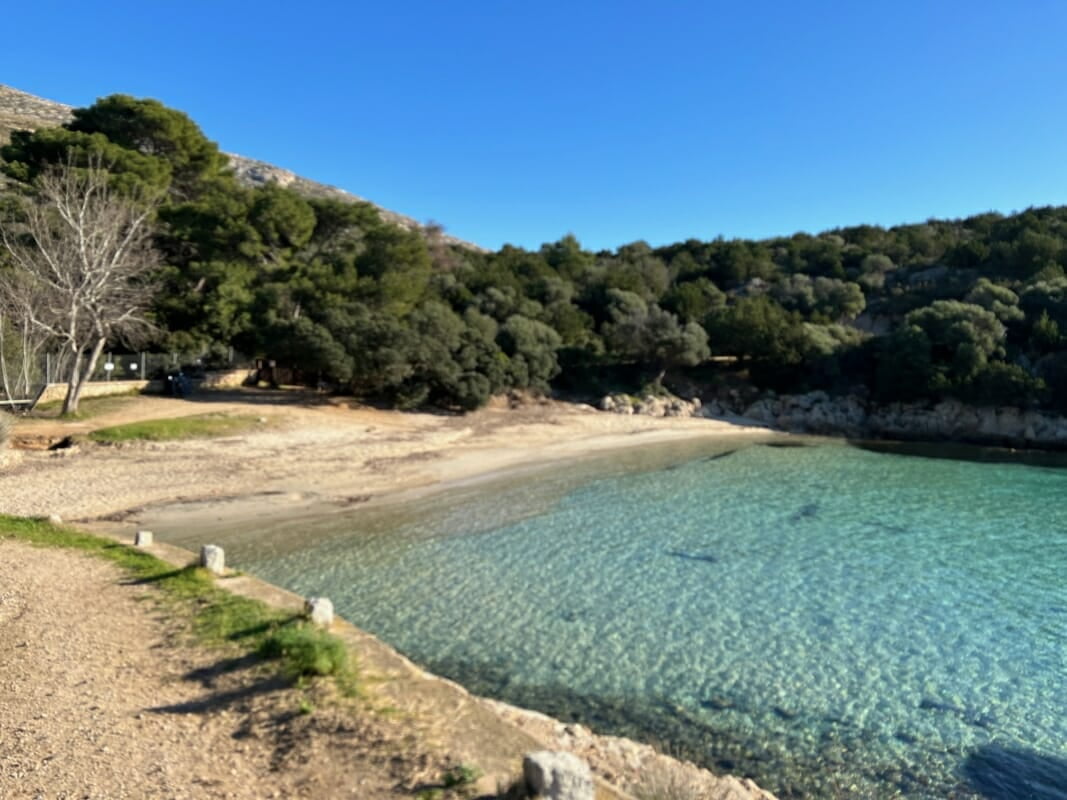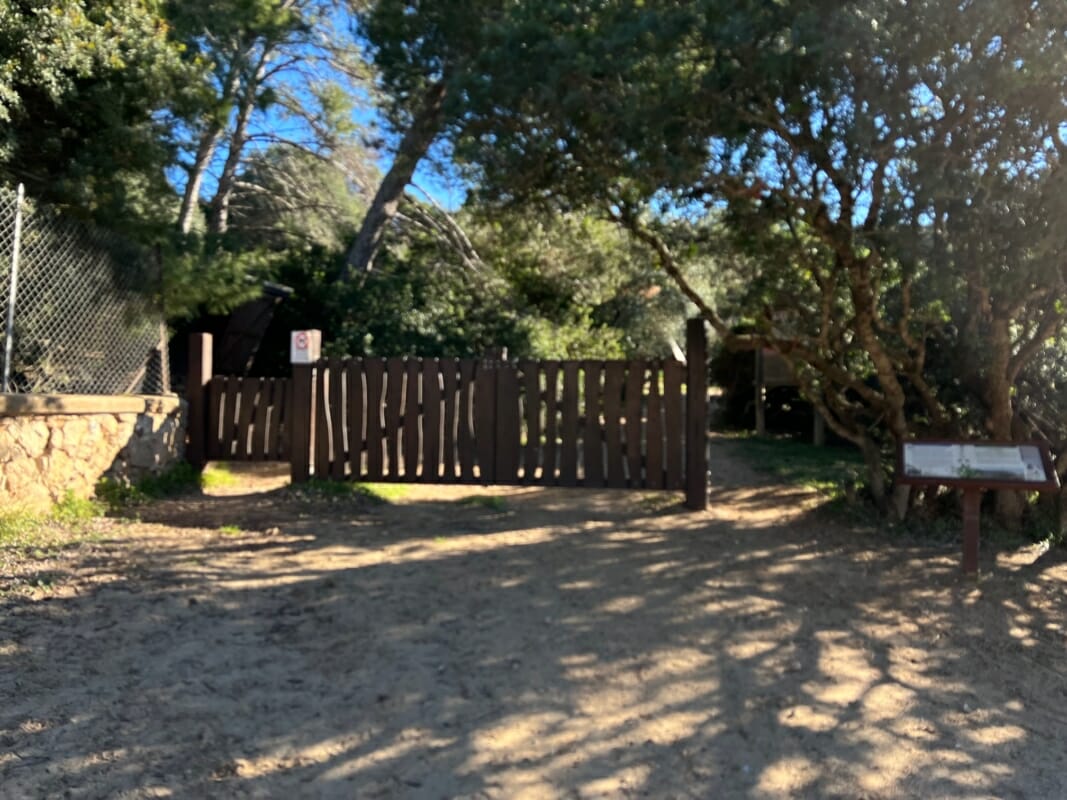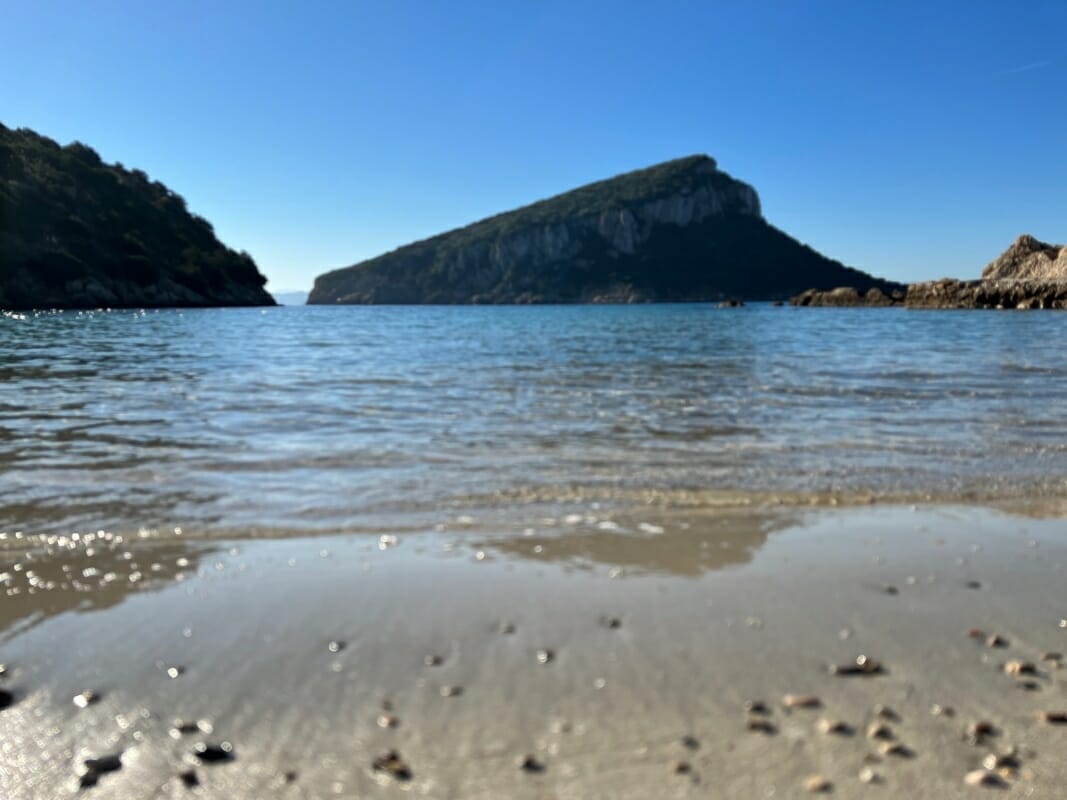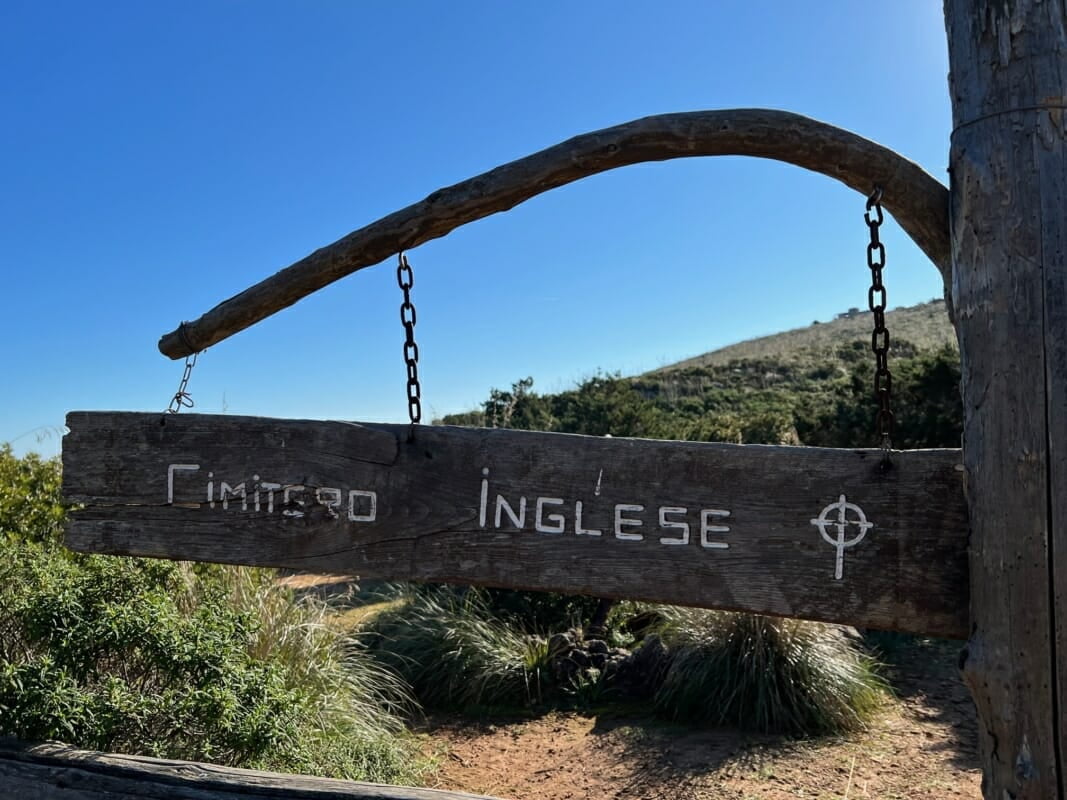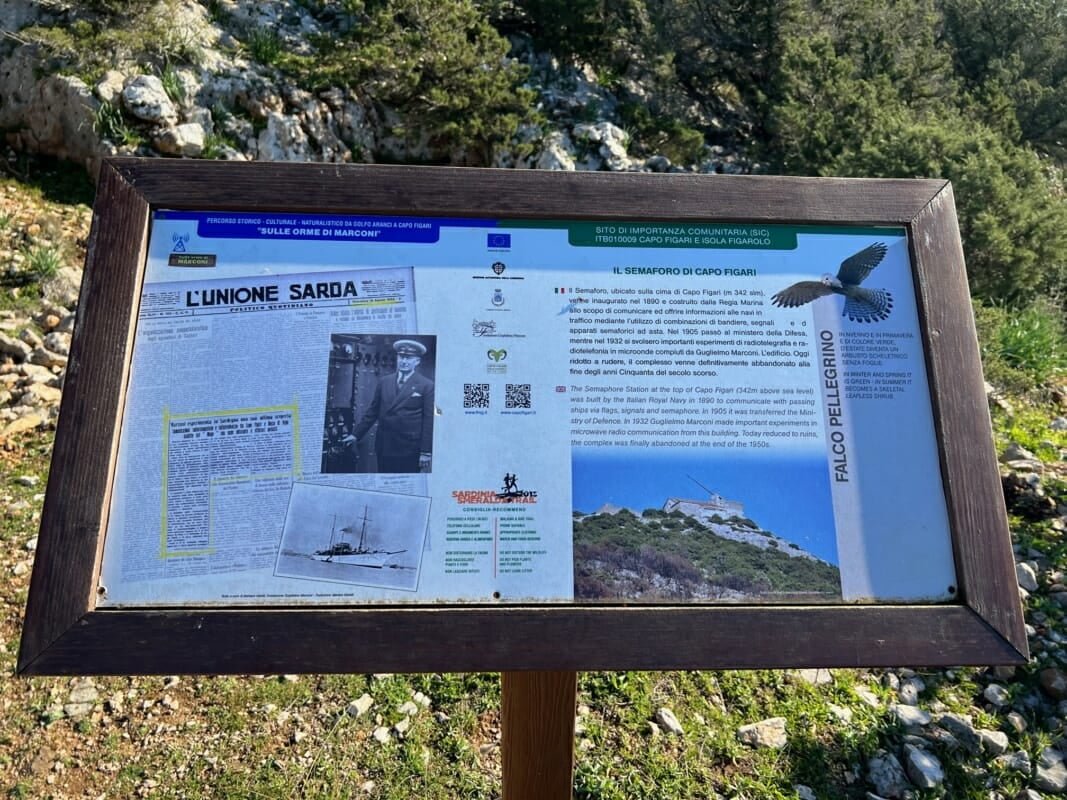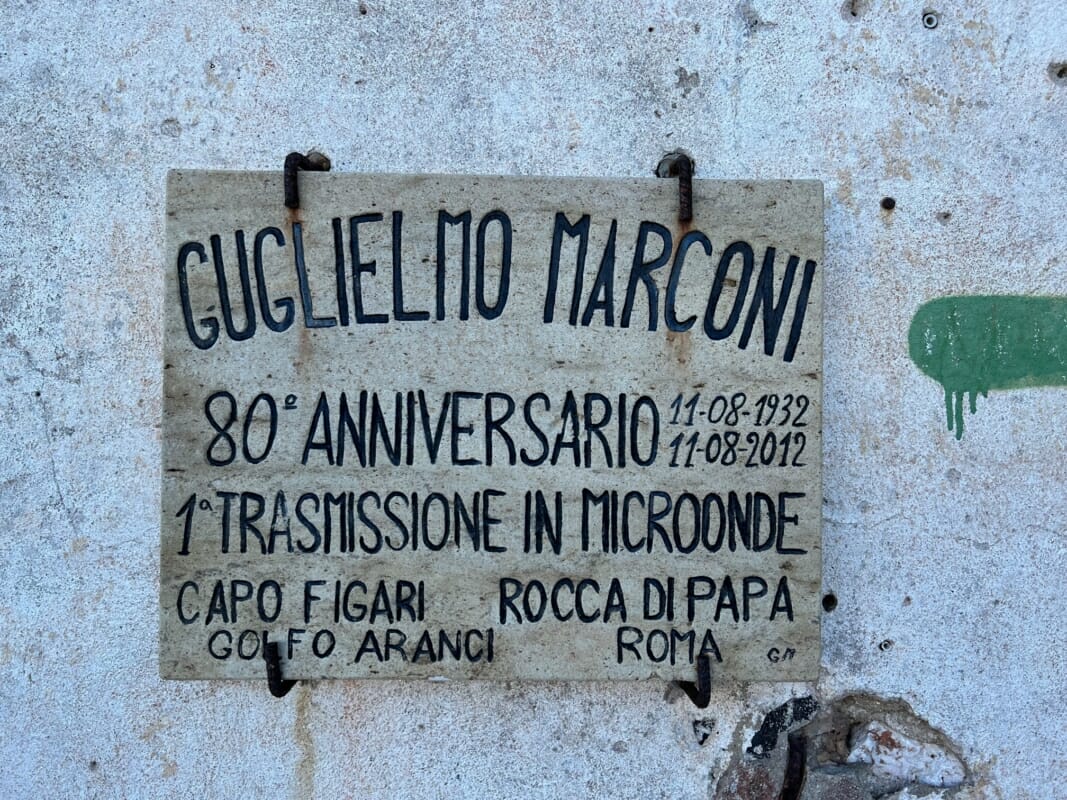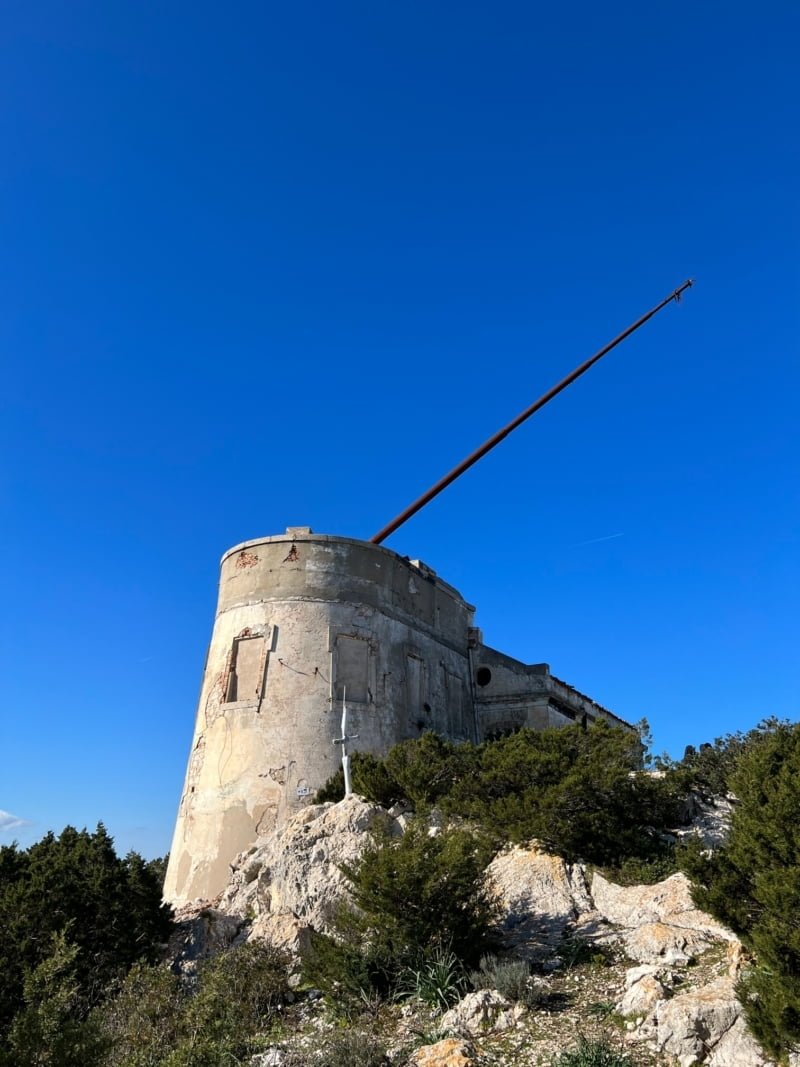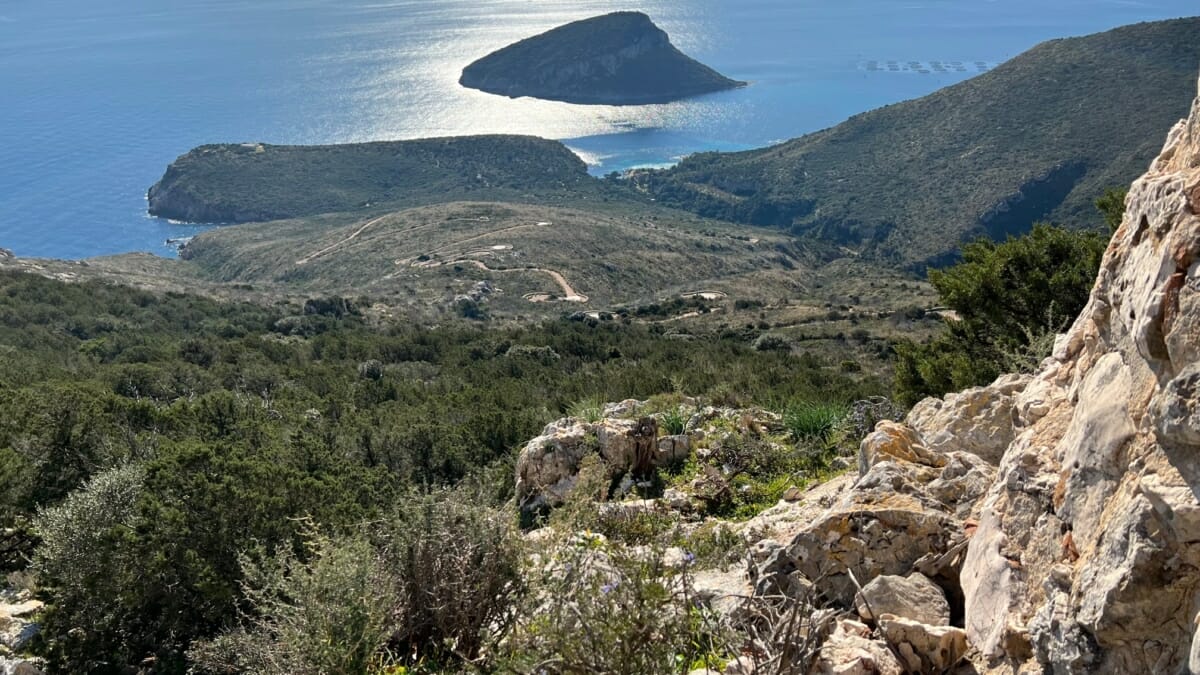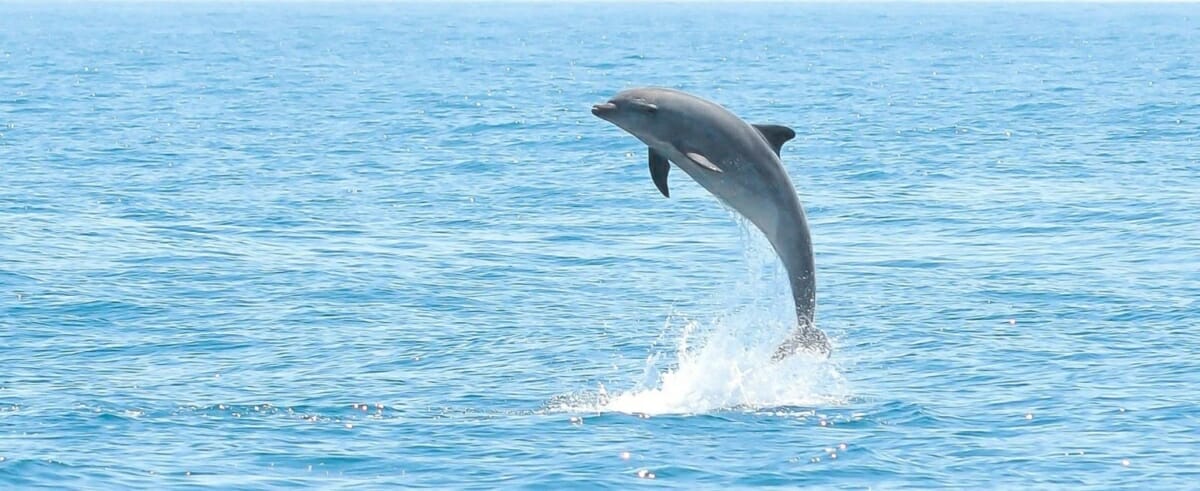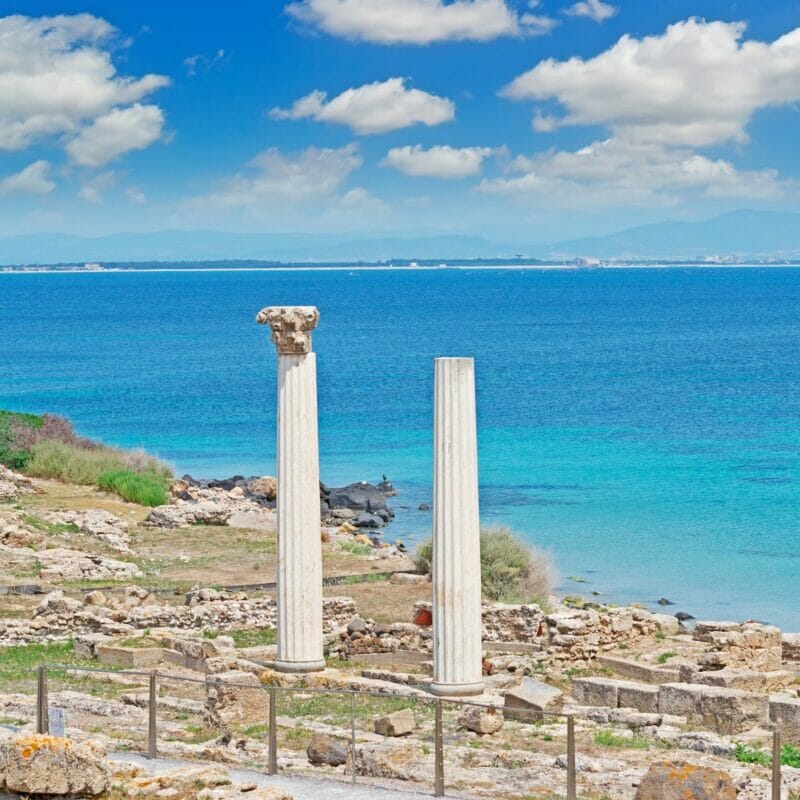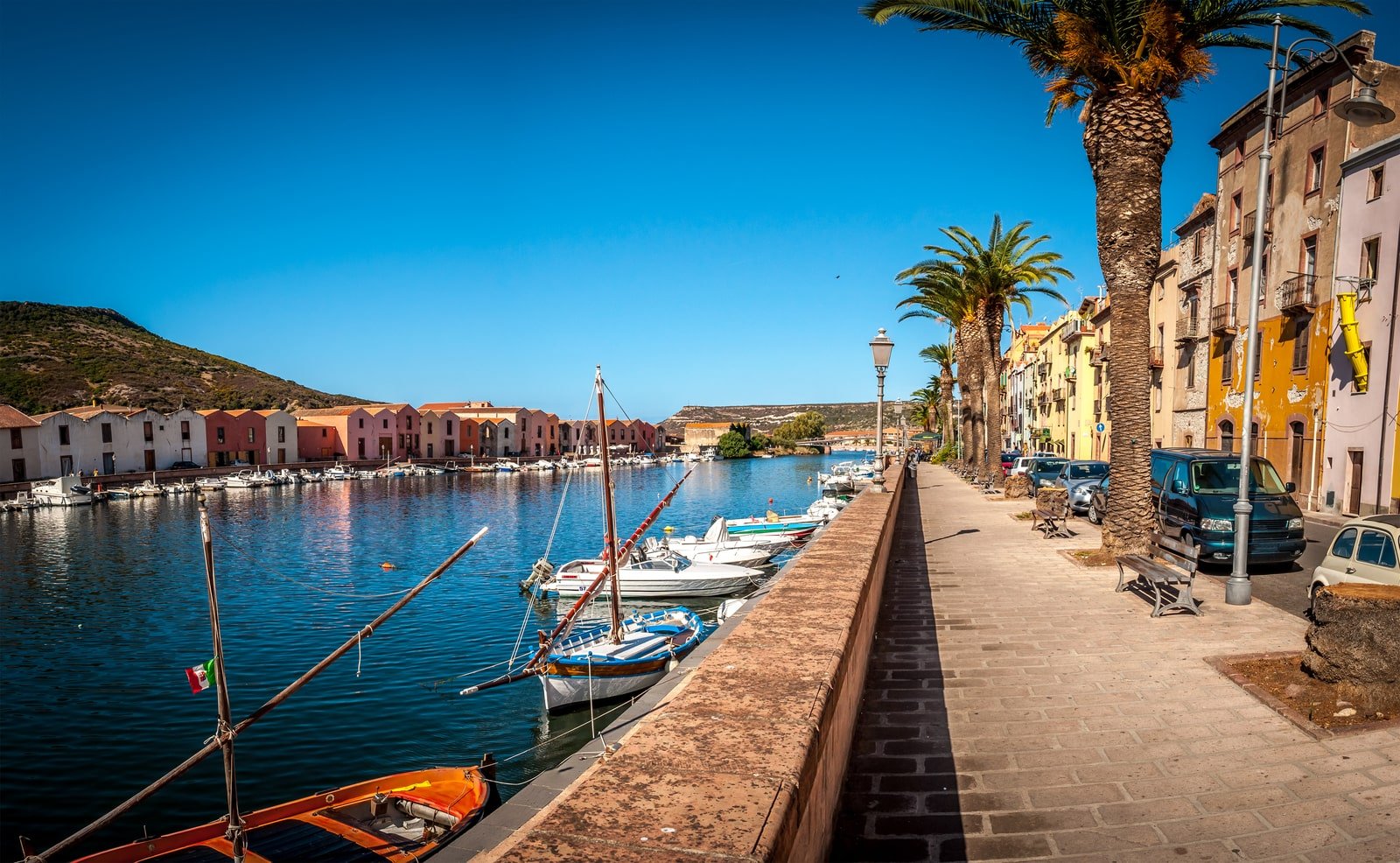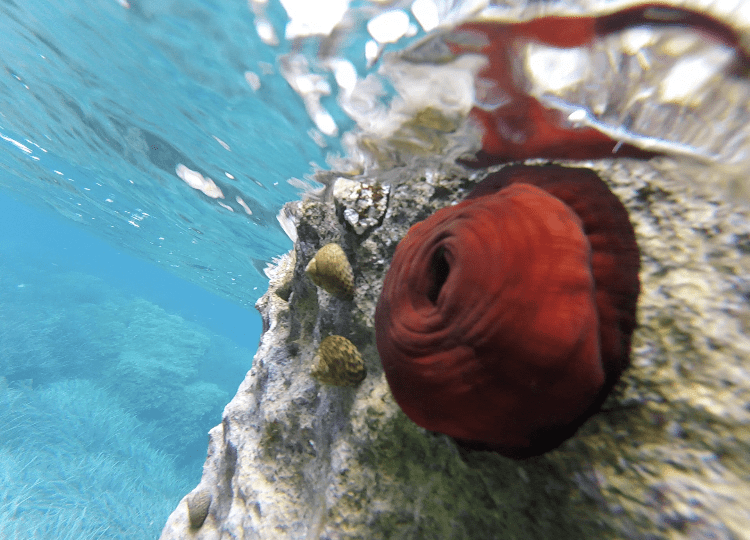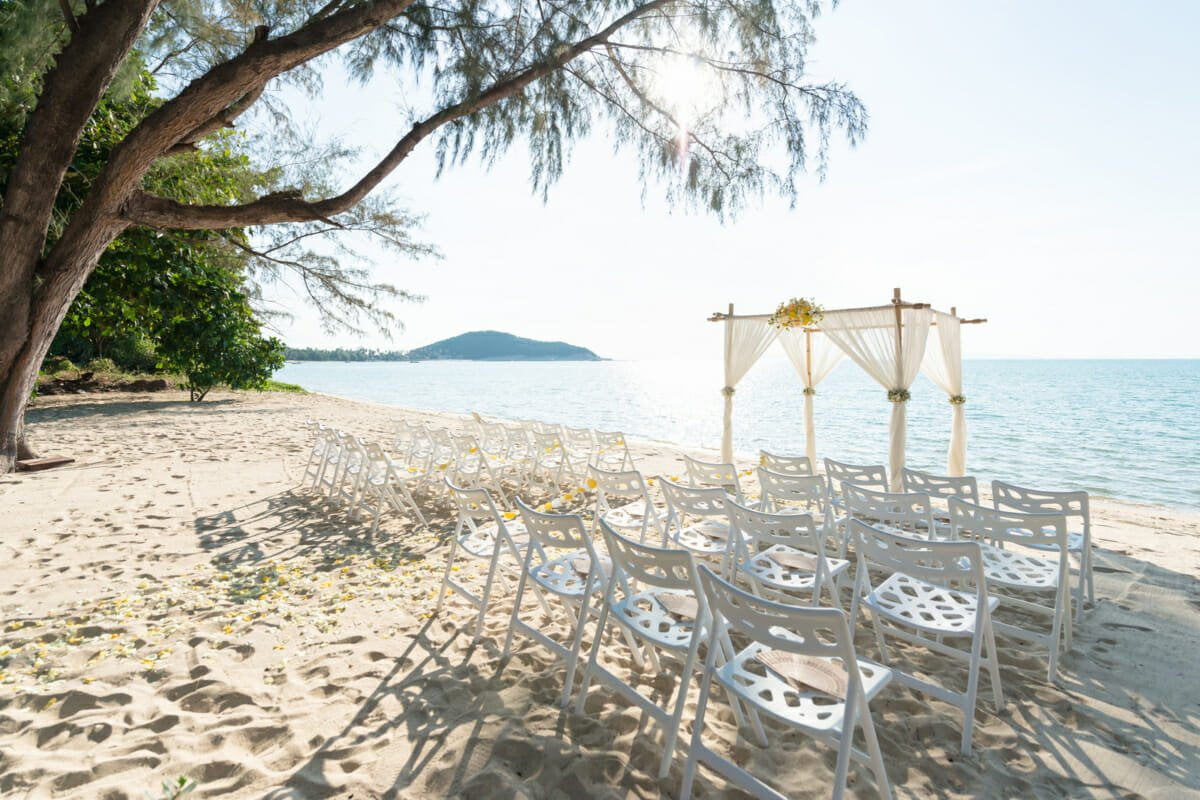Here you will find a excursus of the infographics on the path up to Capo Figari, to retrace the footsteps of Guglielmo Marconi at Golfo Aranci.
In the footsteps of Marconi at Golfo Aranci
See photographs and read the full text of the posters included in the 'Historical - Cultural - Naturalistic Route Golfo Aranci to Capo Figari'.
Infographic in Cala Moresca
Guglielmo Marconi at Capo Figari
In the summer of 1932, Capo Figari was the scene of Guglielmo Marconi's microwave-modulated radiotelephony and redio-telegraphy experiments. The famous scientist arrived at Golfo Aranci on 10 August aboard the Elettra, his laboratory ship purchased in 1919, and the following day the equipment (the receiving reflector) was transported to Capo Figari so that in the afternoon reception tests were carried out from Rocca di Papa (269 km away). After appropriate adjustments, the results were excellent until sunset while during the evening hours it was confirmed that the signals suffered a strong attenuation. The experiments ended around midnight.
Cala Moresca
Cala Moresca is the most famous of the inlets on the Gulf-Adriatic coastline, and derives its name from the figu morisca, the name given in Sardinian to the prickly pear. One can still see the abandoned remains of the industrial lime production facilities, activated by the Tamponi family between the 1950s and 1960s. The small stazzo, once inhabited by the plant caretaker, also belongs to the aforementioned family, as does the entire peninsula of Capo Figari.
Seagull Course
The Corsican gull nests in late spring and the eggs hatch almost a month after laying with the male helping the female in hatching.
Infographic junction Capo Figari - Punta Filasca
The yacht Elettra
Purchased in 1919 and transformed by Marconi into a floating laboratory, for almost two decades the yacht Elettra sailed the length and breadth of the Mediterranean for mainly scientific purposes. Memorable were the radio signal that from the port of Genoa lit up the lights of Sydney Town Hall in Australia (1930) and the first "blind navigation" experiment in the port of Sestri Levante (1934). It was on board the Elettra, during cruises that could last several months, that Marconi performed some of the experiments that paved the way for recent wireless developments.
English Cemetery
To go up to the traffic light at Capo Figari go to the left, the path indicated on the right leads you instead in the direction of Cala Greca (possibly named after the shipwreck of a Greek ship in 1888), where there is a small shipwreck cemetery, known as the English or British Cemetery, due to the presence of a grave of sailor G. C. Bradshaw, a sailor on the British ship HMS Vulcan that stopped at Golfo Aranci in June 1900. The first burials are from the year 1887.
Tufted Marangoni
The tufted plover spreads its wings after diving to dry its feathers. Unlike other birds, it does not have enough insulating fat.
Sea view billboard on path Capo Figari
Interesting information on the local fauna, the maquis and the typical plants of Sardinia.
The Origins of Wireless
In the last years of the 19th century, the 20-year-old Guglielmo Marconi had started the peaceful revolution in radio communications. Born in Bologna in 1874, the young Marconi matured his desire to become an inventor at a very young age and in Villa Griffone - his father's house located in the foothills of Bologna - he carried out his first wireless telegraphy experiments in 1895. That house is now home to the Marconi Foundation and Museum where the inventor's beginnings and developments in wireless telegraphy from Marconi's beginnings to today are recounted
Promontory of Capo Figari
The promontory of Capo Figari (342 metres above sea level) delimits the Gulf of Olbia to the north, which in turn is closed to the south by the promontory of Capo Caraso and the island of Tavolara, with which Capo Figari shares its calcareous geological origin. The place-name Figari must once have encompassed a much larger area, including the isthmus where Golfo Aranci arose in the 1880s, reaching as far as the Gulf of Marinella. In classical antiquity, the promontory was called Columbarium promontorium.
Lentisk
Known for its many properties, it produces a resin that tones the skin and prevents it from ageing.
Olviastro
The wild olive tree has an extraordinary longevity, believed to be up to a thousand years old.
Billboard before reaching traffic lights
The traffic light of Capo Figari
The Semaforo, located on the summit of Capo Figari (342 metres above sea level), was inaugurated in 1890 and built by the Regia Marina for the purpose of communicating and providing information to ships in traffic through the use of combinations of flags, signals and semaphore masts. In 1905 it passed to the Ministry of Defence, while in 1932 important experiments in radiotelegraphy and microwave telephony were carried out by Guglielmo Marconi. The building. Now reduced to ruins, the complex was finally abandoned in the late 1950s.
How useful was this post?
Click on a star to rate it!
Average rating 5 / 5. Vote count: 12
No votes so far! Be the first to rate this post.



